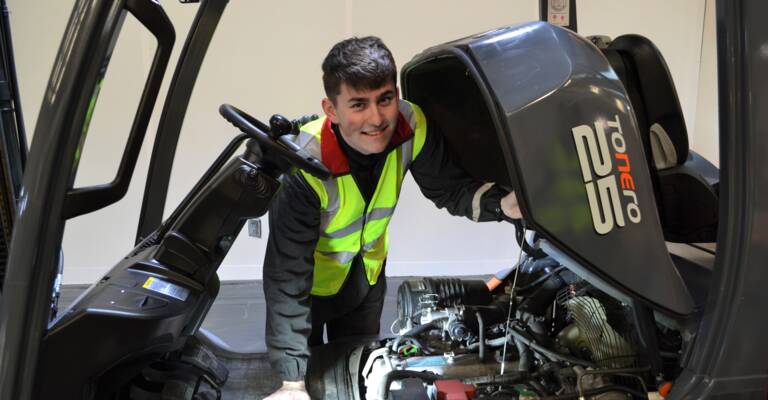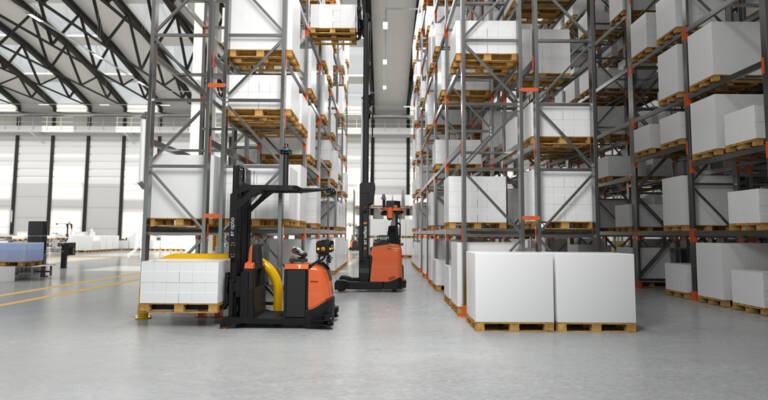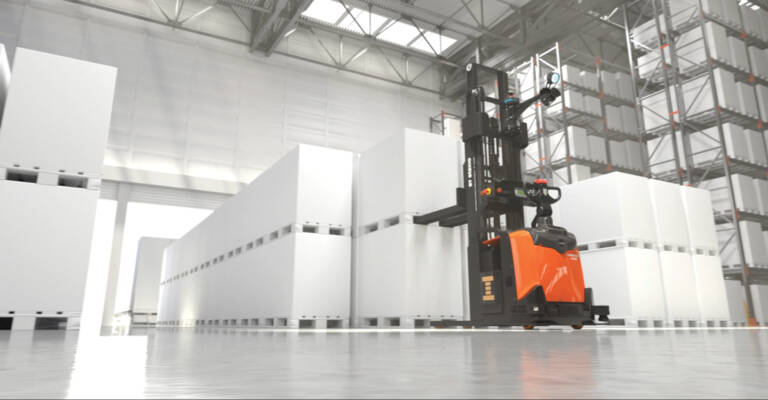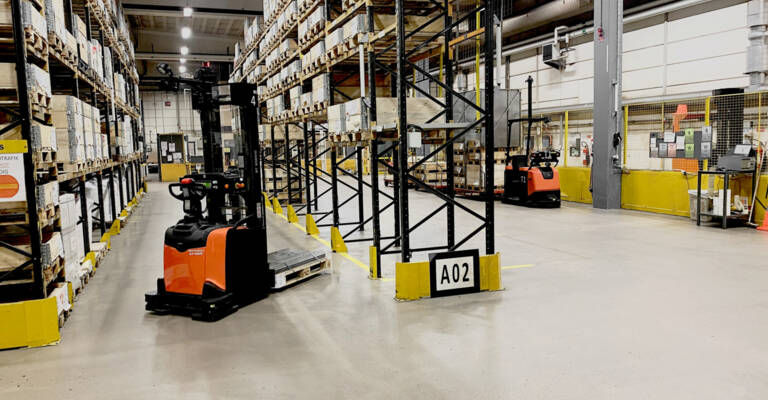
Meet the team - Daniel Hardwick
Relishing being involved with technology

Daniel began his career with Toyota seven years ago when, at the age of 18, he was enrolled on to the company’s engineering apprenticeship programme. He was one of 6 young people to start the course and, it is testament to the blend of ‘on the job’ and classroom-based learning that the Toyota apprenticeship entails that all 6 not only completed the three-year journey but have all gone on to enjoy careers with Toyota. He says “I cannot recommend the Toyota apprenticeship scheme enough to anyone”
After his apprenticeship Daniel spent six months on the road as a lift truck maintenance engineer before becoming a site engineer based at the Sainsburys’ facility at Sherburn (Leeds) and then taking on his current Applications Engineer role.
Daniel clearly relishes being involved with the technology that is reshaping the way modern warehouses operate and, he says, “gets a buzz” from working on projects from the initial site survey stage to the final handover.
“I am at the forefront of technology which is always advancing and evolving, I always have something new to learn and I don’t think I could ever get bored of doing what im doing, clients are always impressed when they see their system in operation for the first time.”
Outside of work Daniel enjoys “gaming and messing about with computers” and, when his pet Labrador, Obi, allows him out of the house on his own, he watches (and occasionally turns out for) his local rugby club, Castleford Rugby Union Club.
“The opportunities with Toyota are amazing,” he says. “I love what I’m doing and am proud to be working with software and hardware that is revolutionizing the supply chain.”
Turning to automated guided vehicles (AGV's)

Daniel is a Toyota Applications Engineer and spends much of his time working with customers on the design and installation of intralogistics solutions that have software-driven automated guided vehicles (AGVs) that do not require a dedicated human operator at their heart. The labour crisis means that he is busier than ever.
“To sustain throughput rates within their warehouses and factories, companies across all industry sectors are seeking to mitigate the impact of the UK-wide lack of warehouse operatives - and forklift drivers in particular by - turning to AGV’s and other forms of automated materials handling equipment,” says Daniel.
He continues: “AGV’s – such as Toyota’s Autopilot series – bring a rapid return on investment. For example, Toyota’s AGV-enabled forklifts – forklifts initially designed for manual use that have been converted into autonomous vehicles - deliver a typical ROI period of between 12 and 36 months.”
Automation is the future

Converting manual forklift trucks and other MHE, such as tow-tractors, into AGVs is proving extremely popular at the moment among a wide range of end users– from manufacturing operations to ecommerce traders.
Daniel Hardwick adds: “The profile of the typical automation user is evolving and small and medium sized warehouse operators and ecommerce retailers now see automated handling and storage technology as the optimum solution to their issues. The forklift operator crisis is clearly accelerating the trend.”
With more and more companies choosing to automate part or, in some cases, all of their intralogistics processes, Daniel Hardwick believes advances in automation will drive many of the key future developments in materials handling equipment technology.
“There’s no doubt that automation is the future,” he says.
Lower costs and built-in safety functionality

Daniel continues: “And it isn’t just the shortage of skilled people available to operate forklifts that is driving the growing market for automated handling solutions.
“The operational cost of automation is also usually lower than manually-operated processes and, because automated guided vehicles follow the route that they have been programmed to follow, the likelihood of an automated truck damaging the building, the storage system within it or the load being carried is virtually zero.
“This built-in safety functionality also means that the risk of the equipment causing injury to warehouse personnel working in the same area as an automated machine is minimal.”
“And,” he adds, “it is often overlooked but, in terms of environmental-friendliness, an automated guided vehicle uses less energy and can be expected to have a longer working life than a manually-operated forklift.”
